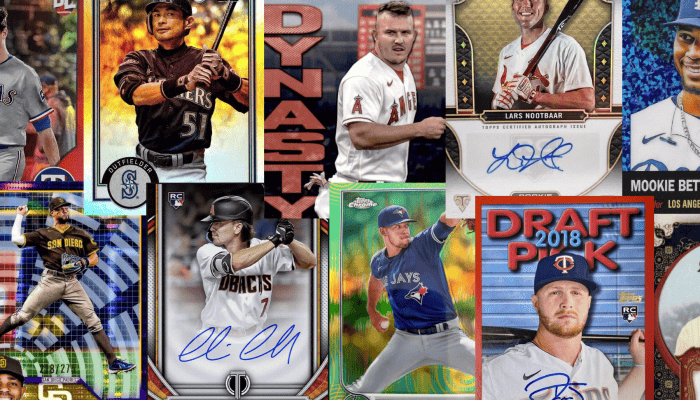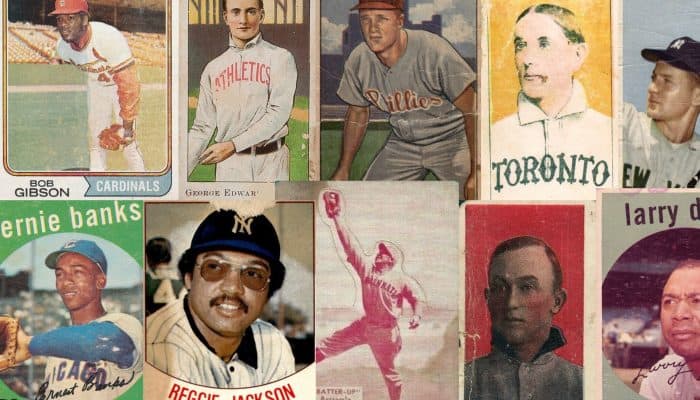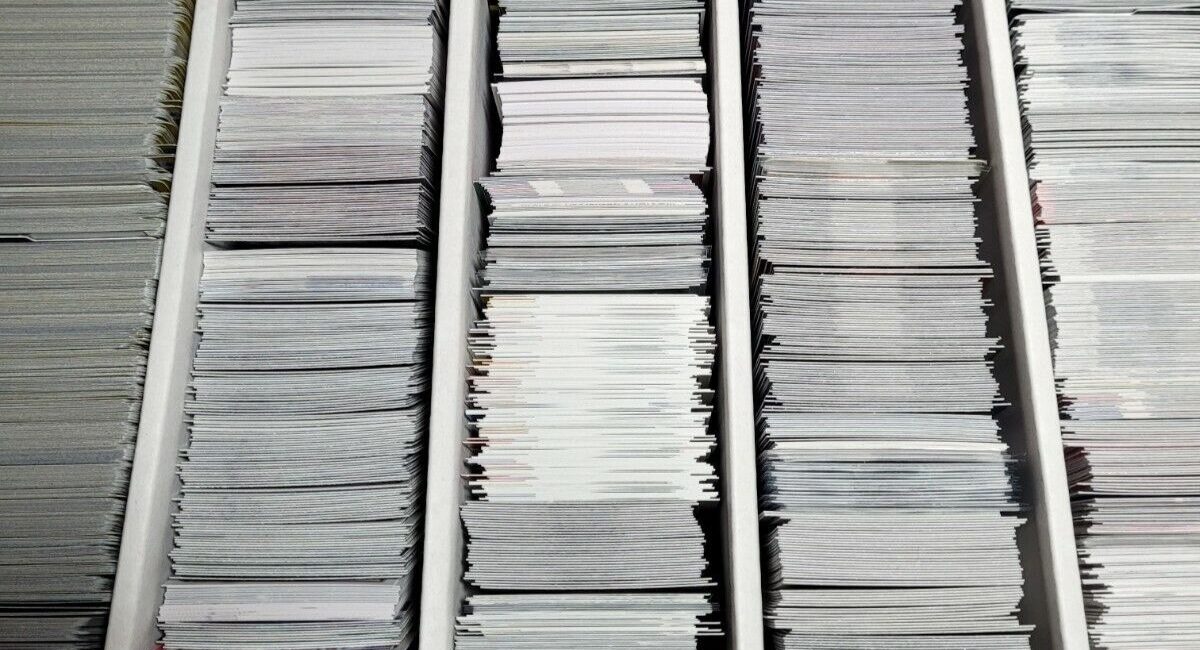
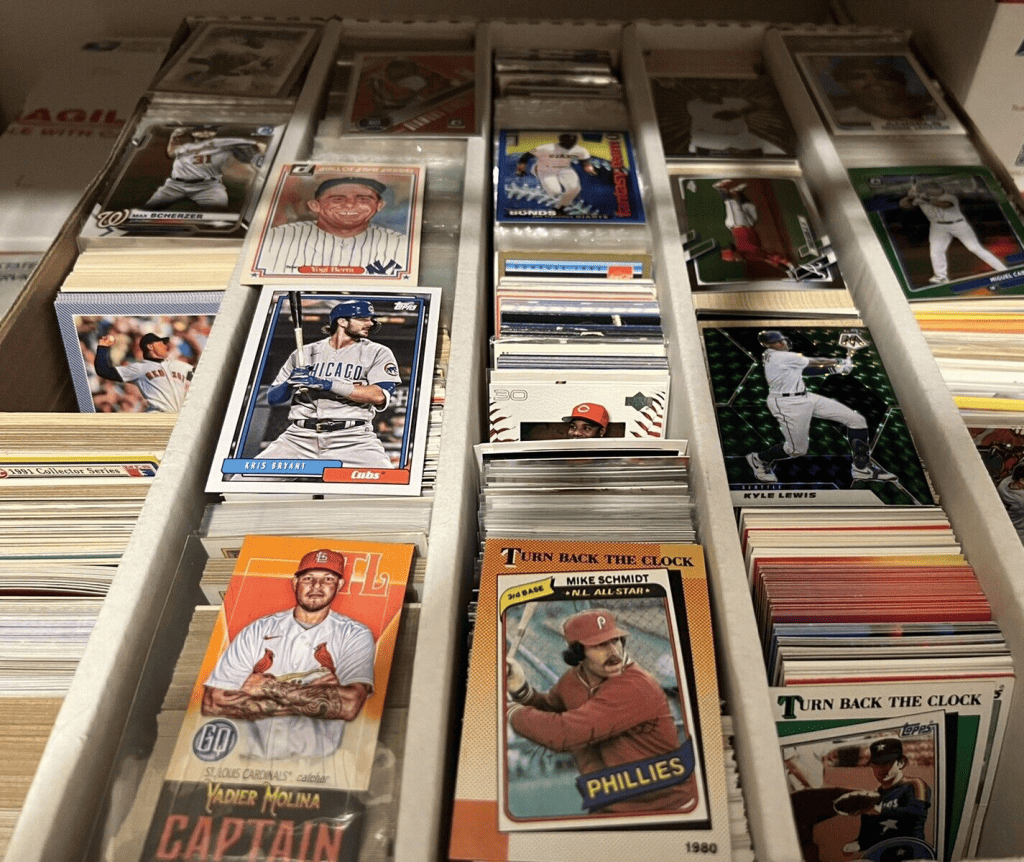
For collectors, the safety and preservation of their beloved collection is paramount. Whether you have a shoebox filled with vintage cards or a carefully curated assortment of modern gems, safeguarding these cherished items is crucial.
In this comprehensive guide, we’ll explore the best ways to store baseball cards, covering a range of protective measures and various other storage options to ensure your cards remain in pristine condition.
Penny Sleeves
Modern card storage often starts with the penny sleeve (so named because you used to be able to get 100 of them for $1.00 – now it’s about $0.03-$0.05 each). Penny sleeves are one of the most fundamental and widely used methods for storing baseball cards. These clear, thin plastic sleeves offer a cost-effective way to protect your cards from dust, fingerprints, and minor surface wear.
Here’s how to use them effectively:
- Sleeve Placement: Insert the card into the sleeve with the opening at the top to prevent the card from slipping out accidentally.
- Double Sleeving: For added protection, consider double sleeving your cards by placing them in a penny sleeve first and then inserting them into a thicker top loader.
Top Loaders
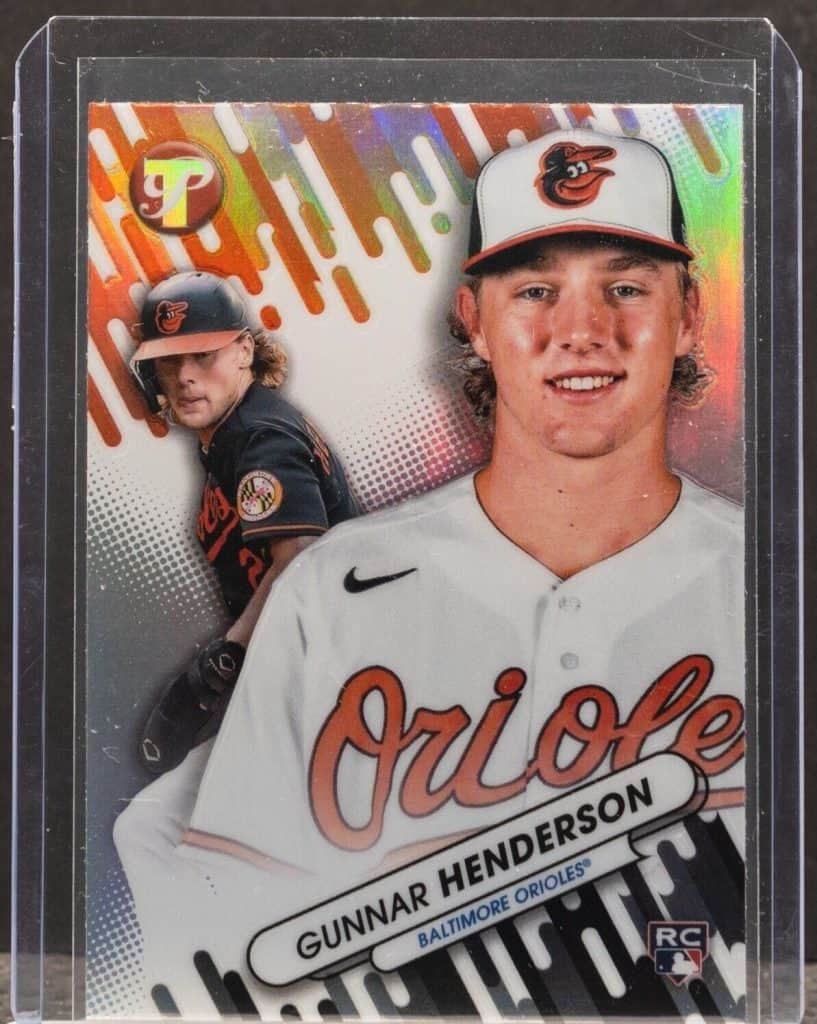
Top loaders are rigid plastic holders designed to prevent bending, creasing, or other damage to your baseball cards. They are available in various thicknesses to accommodate thicker cards, such as relics. The standard width x height is 3×4 inches.
Top loaders are a favorite among collectors for their durability and versatility. Here’s how to utilize them effectively:
- Proper Fit: Ensure that the card fits snugly within the top loader without too much room to move. This prevents the card from shifting and potentially getting damaged.
- Taping: Some collectors prefer to tape the opening of the top loader to further secure the card inside. However, use caution to avoid damaging the card upon removal.
While toploaders are great for preventing bending and creasing, they offer limited protection against environmental factors such as dust, moisture, and UV light. They are best used in conjunction with other protective measures.
Magnetic Holders
Magnetic holders, also known as magnetic cases, are a premium storage option for collectors who want to showcase their most valuable and prized cards. These holders consist of two clear plastic panels that are secured together with magnets.
Here’s how to make the most of magnetic holders:
- Card Preparation: Ensure your card is clean and free from any dust or residue before placing it inside the magnetic holder.
- Careful Handling: Magnetic holders can be more challenging to open than top loaders or penny sleeves, so exercise caution when removing your card to prevent any accidental damage.
Magnetic holders are one of the costliest storage options, which can make them less accessible for collectors with large collections or those on a tight budget. They are also generally designed for standard-sized cards. If you have cards that are thicker due to added patches or memorabilia, you may need to consider alternative storage options.
Graded Cards (Slabs)
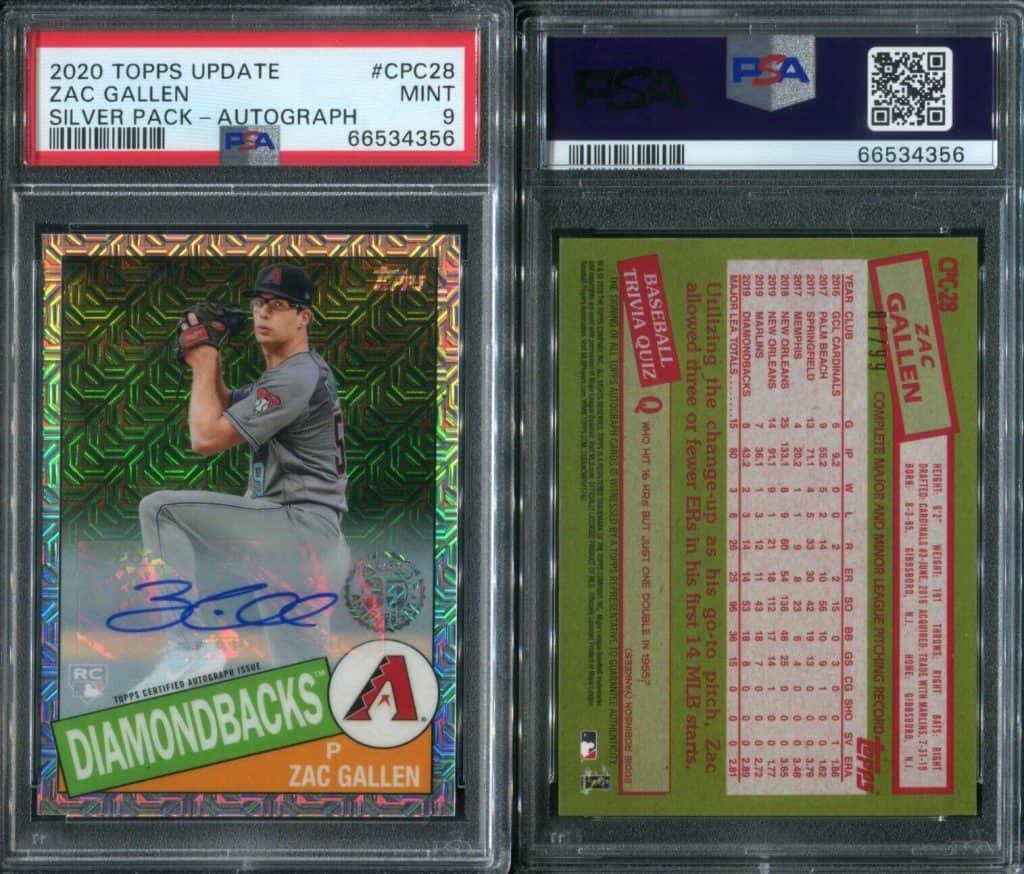
Grading and encapsulation services have become increasingly popular in the world of baseball card collecting. Graded cards, encased in protective slabs, offer the highest level of protection, authentication, and valuation.
Here’s what you need to know:
- Professional Grading: Send your cards to a reputable grading service, such as PSA (Professional Sports Authenticator) or BGS (Beckett Grading Services), for evaluation. They will assess the card’s condition and assign it a grade, which is prominently displayed on the slab.
- Slab Storage: Graded cards come in tamper-evident, UV-resistant slabs that are virtually airtight. These slabs protect your cards from physical damage, environmental factors, and tampering.
- Display: While slabs are excellent for long-term preservation, some collectors prefer to display the cards outside of the slab for visual appeal. In such cases, consider using acrylic card holders that fit the specific dimensions of the graded slab.
Each grading company has a different style and size of slab; for example, PSA has a white label at the top of the slab, while BGS has a gold label. Most collectors end up with a predilection toward one grader or another, either for aesthetics, price or consistency.
Once a card is encapsulated in a graded card slab, it becomes inaccessible for casual viewing or trading. If you want to enjoy your cards outside of the slab, this option is not suitable.
Card Savers
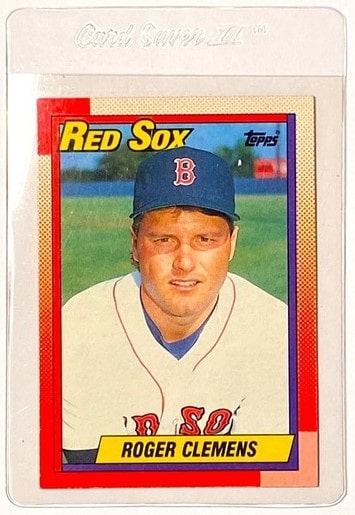
Card savers, also known as semi-rigid card holders, are used primarily for submitting cards to grading services. They provide sturdy protection during transit and evaluation, but minimal protection against environmental factors like dust, moisture, and UV light.
If you want to showcase your collection, you’ll need to transfer the cards to other display-friendly storage solutions.
Here’s how to use them effectively:
- Card Insertion: Carefully slide the card into the open end of the card saver. Avoid bending or forcing the card, as this can lead to damage.
- Labeling: When submitting cards for grading, make sure to label the card saver with all necessary information, such as the card’s description, year, and manufacturer.
Other Storage Options
In addition to the methods mentioned above, there are various other storage options available to cater to collectors’ specific needs:
- Binder Pages: Binder pages allow you to organize and display your baseball cards in a binder. They are available in various pocket configurations to accommodate different card sizes.
- Card Boxes: Card storage boxes are an efficient way to store large collections. These boxes are designed to hold multiple cards in top loaders or other protective cases and come in various sizes and styles. For those with a significant number of graded cards, specialized graded card storage boxes are available to keep your slabs organized and protected.
- Team Set Bags: Team bags are clear, resealable plastic bags that can hold multiple cards, making them ideal for organizing sets or keeping cards together.
How NOT to Store Cards
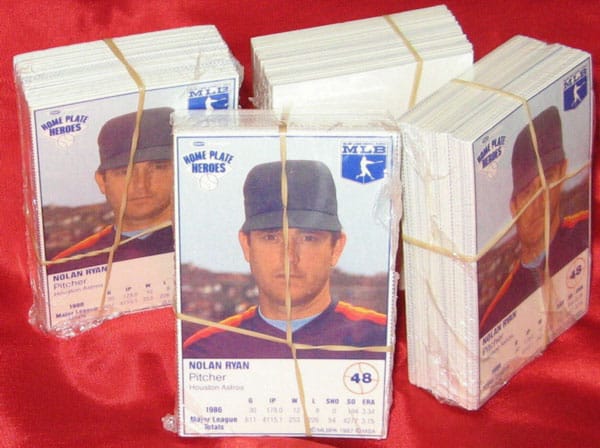
As education and awareness improves, sometimes card storage options fall out of favor. Here are some methods that are now a bad idea:
Rubber Bands
Up until the 90s, rubber bands were the preferred option for kids collecting cards. There weren’t a lot of card shows or stores, and little attention was given to a card’s condition, especially by young fans who enjoyed rifling through their collection every day.
Unfortunately, rubber bands leave grooves in the sides of cards, and the cards are open to the elements. Even if the cards are in penny sleeves or team set bags, avoid the temptation to use rubber bands.
Luckily, serious collectors almost never use rubber bands, so this is largely a walk down memory lane instead of a warning.
Screwdown Holders
For decades, screwdowns were a preferred storage solution among collectors looking to protect their high-end cards. Similar to magnetic holders, screwdowns do what they say – the card is placed between two layers of hard plastic and screwed together, trapping the card in the middle. The problem is, if it was screwed too tightly and left that way, the card became compressed. When professional grading rose to prominence, some cards that were too tightly screwed into place failed the grading process because they were flattened.
Tips for Maintaining Card Condition
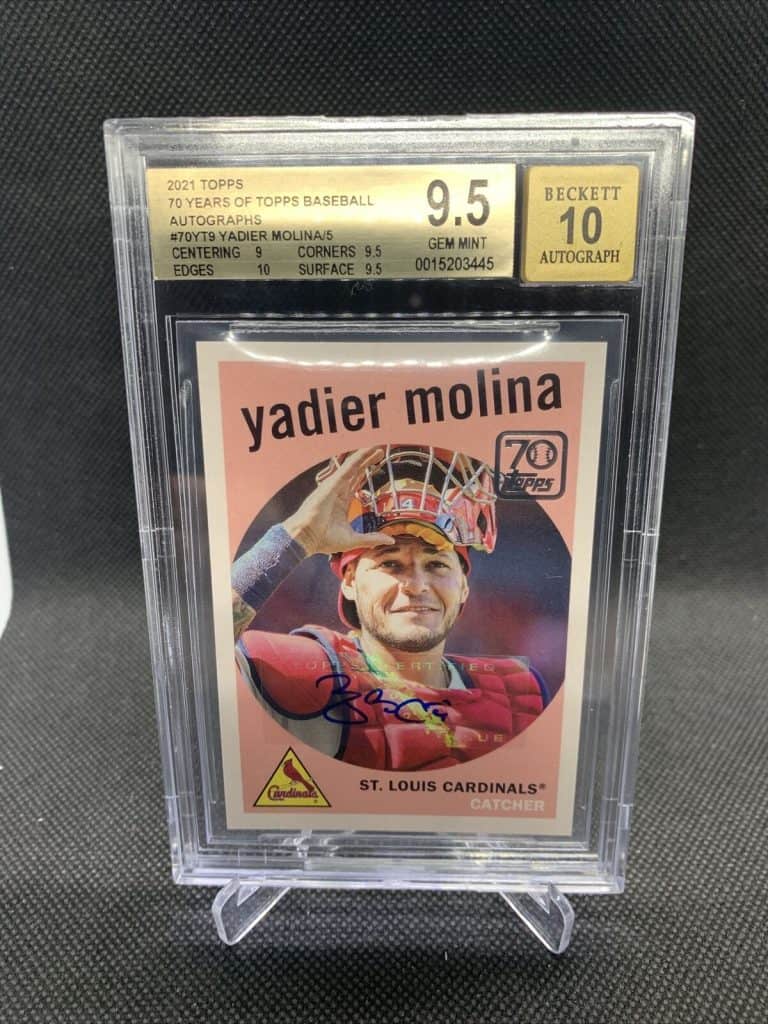
While choosing the right storage method is essential, proper care and maintenance are equally important. Here are some tips to help you maintain your card collection’s condition:
- Handle with Clean Hands: This one should be obvious, but always wash your hands thoroughly before handling cards to prevent oil and dirt transfer.
- Avoid Direct Sunlight: Store your cards in a cool, dark place to prevent fading or damage from Ultraviolet rays. UV-protected holders can help preserve your collection, but understand that none of these block 100% of UV rays. Pay attention to your room too, because some types of lighting can also give off UV rays.
- Regulate Humidity and Temperature: Extreme humidity can cause cards to warp or develop mold. Use dehumidifiers or moisture-absorbing products to maintain optimal humidity levels. Extreme heat or cold can lead to warping, cracking, or adhesive issues with storage materials. Keep cards in a climate-controlled environment.
- Buy Supplies From Trusted Companies: You spend time and money on your collection. Now is not the time to skim on the supplies. Make sure you buy from reputable companies like BWC and Ultra Pro, and carefully examine the product before buying. Putting a card in the wrong holder may ruin it over time due to UV light or chemical reactions. Check for UV protection, PVC-free and acid-free materials.
Conclusion
Storing baseball cards is an art in itself, and the right method can make a significant difference in preserving their value and condition. Whether you’re an avid collector or someone who stumbled upon a box of old cards, safeguarding your treasures is essential. By using protective measures such as penny sleeves, top loaders, graded card slabs, magnetic holders, card savers, and various other storage options, combined with proper care and maintenance, you can ensure that your baseball card collection remains a timeless and cherished possession.
